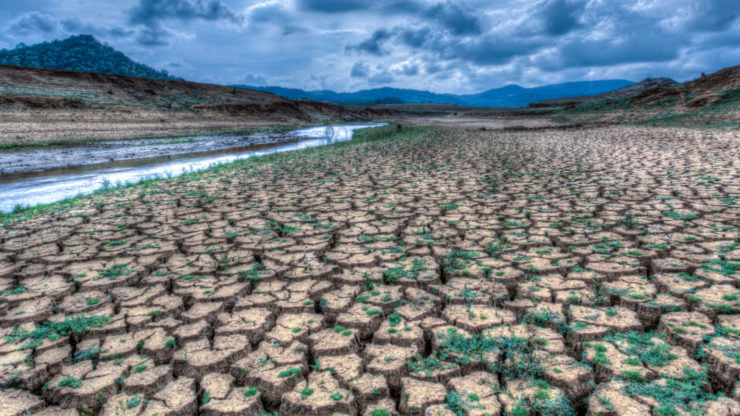As temperatures rise and climate change impacts intensify, nations must urgently step up action to adapt to the new climate reality or face serious costs, damages and losses, the 2020 UN Environment Programme (UNEP) Adaptation Gap Report finds.
The report shows that while nations have advanced in planning, huge gaps remain in finance for developing countries and bringing adaptation projects to the stage where they bring real protection against climate impacts such as droughts, floods and sea-level rise.
Since 2014, UNEP DTU Partnership has led the coordination of the UNEP Adaptation Gap Report series. One of the main contributors to this year’s report was senior scientist and Head of Section for Impact Assessment and Adaptation Analysis at UNEP DTU Partnership, Henry Neufeldt.
“The year 2020 ties with 2016 as the hottest year ever recorded, affecting over 50 million people directly with floods, droughts, storms and wildfires. It is more urgent than ever that we prioritize adaptation and step up adaptation planning, finance and implementation while equally enhancing mitigation efforts as this will avoid many future climate impacts,” he says of the report’s findings.
Download the Adaptation Gap Report 2020 here.
Adaptation urgently needed – even if we reach Paris goals
Adaptation – efforts to reduce the vulnerability and exposure to climate impacts – is a key pillar of the Paris Agreement. It requires implementation of adaptation measures through national plans, climate information systems, early warning, protective measures and investments in a green future.
The Adaptation Gap Report finds that to achieve these goals, public and private finance for adaptation must be stepped up urgently, along with faster implementation.
“The hard truth is that climate change is upon us,” said Inger Andersen, Executive Director of UNEP. “Its impacts will intensify and hit vulnerable countries and communities the hardest – even if we meet the Paris Agreement goals of holding global warming this century to well below 2°C and pursuing 1.5°C.”
A green recovery
The fallout of the COVID 19 pandemic will significantly influence the ability of countries to plan for, finance and implement adaptation actions in response to current and future climate impacts, disproportionately affecting the most vulnerable countries and population groups.
In the short term, resources earmarked for adaptation have been reallocated to combat the pandemic. In the longer term, the consequences of the pandemic will have lasting implications for adaptation processes, as the economic downturn will put additional pressure on public finances and may change national and donor priorities regarding climate action.
A green recovery is therefore crucial if the world is to reach the Paris Agreement goals, both in terms of mitigations and adaptation. A point also made by the Emissions Gap Report 2020, published in December 2020.
“Investing in adaptation is, simply put, a sound economic decision. The Global Commission on Adaptation has estimated that if you invest the necessary 1.8 trillion dollars in climate adaptation, then it would bring a return of more than 7 trillion dollars in avoided costs and other benefits”, Henry Neufeldt says and adds “Strong mitigation now will limit adaptation costs in the future.”
Adaptation planning is growing, but funding and follow-up are lagging
Encouragingly, the report finds that 72 per cent of countries have adopted at least one national-level adaptation planning instrument. Most developing countries are preparing National Adaptation Plans. However, the finance needed to implement these plans is not growing fast enough.
International public adaptation finance is slowly rising, yet annual adaptation costs in developing countries far outweigh current investment levels.
“We need to increase public and private adaptation investments. New tools such as sustainability investment criteria, climate-related disclosure principles and mainstreaming of climate risks into investment decisions could be able to stimulate the necessary investment, but there is a real risk that costs will increase faster than adaptation-oriented finance is increasing,” Henry Neufeldt warns.
Nature-based solutions for adaptation can make a huge contribution
The report places a special focus on nature-based solutions as low-cost options that reduce climate risks while bringing additional benefits for the economy, environment and livelihoods. Nature-based solutions must also become a priority.
The report’s analysis suggests that support for adaptation initiatives with some element of nature-based solutions has risen over the last two decades. However, only a tiny fraction of total adaptation and conservation finance is currently spent on nature-based solutions.

